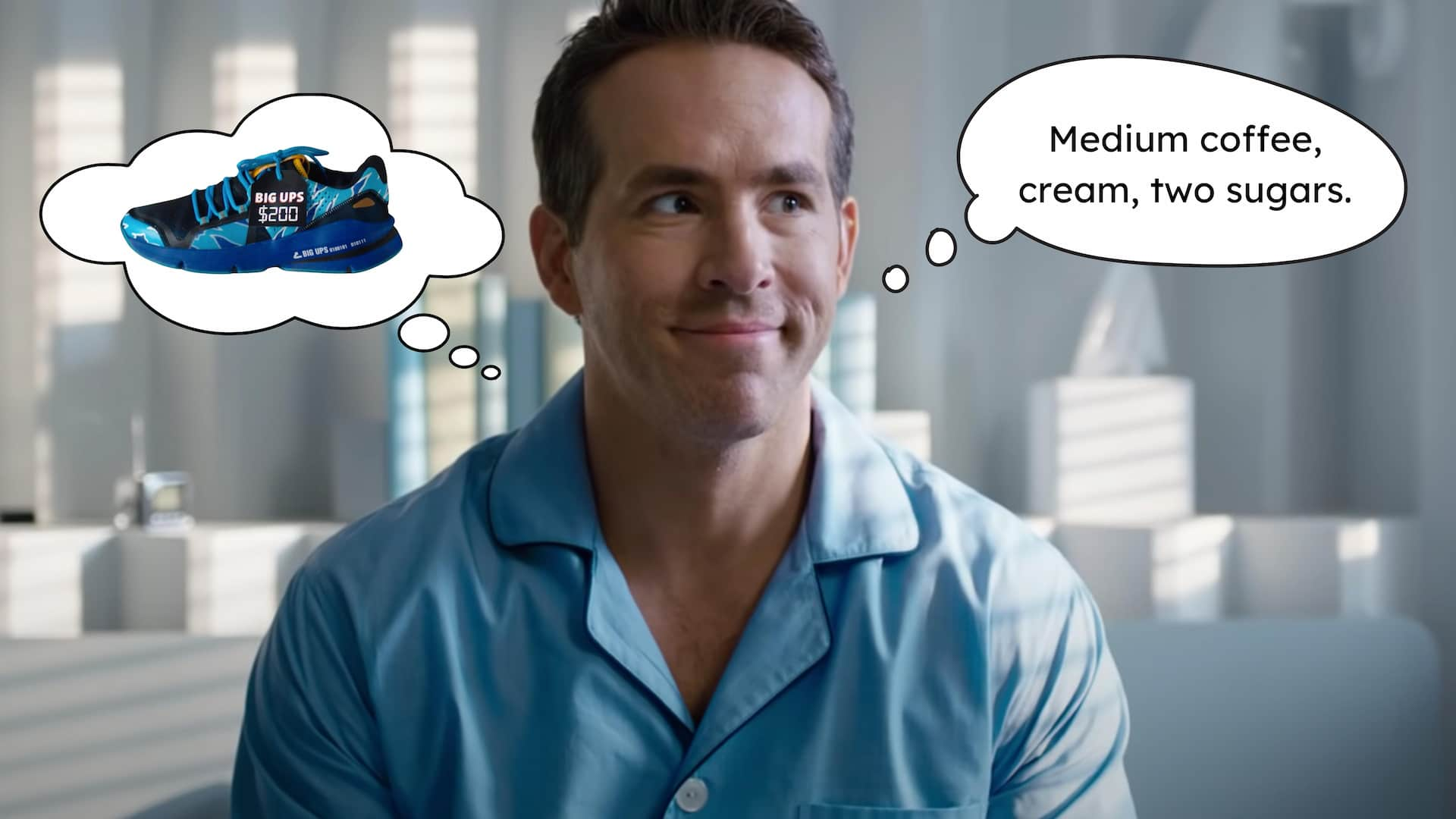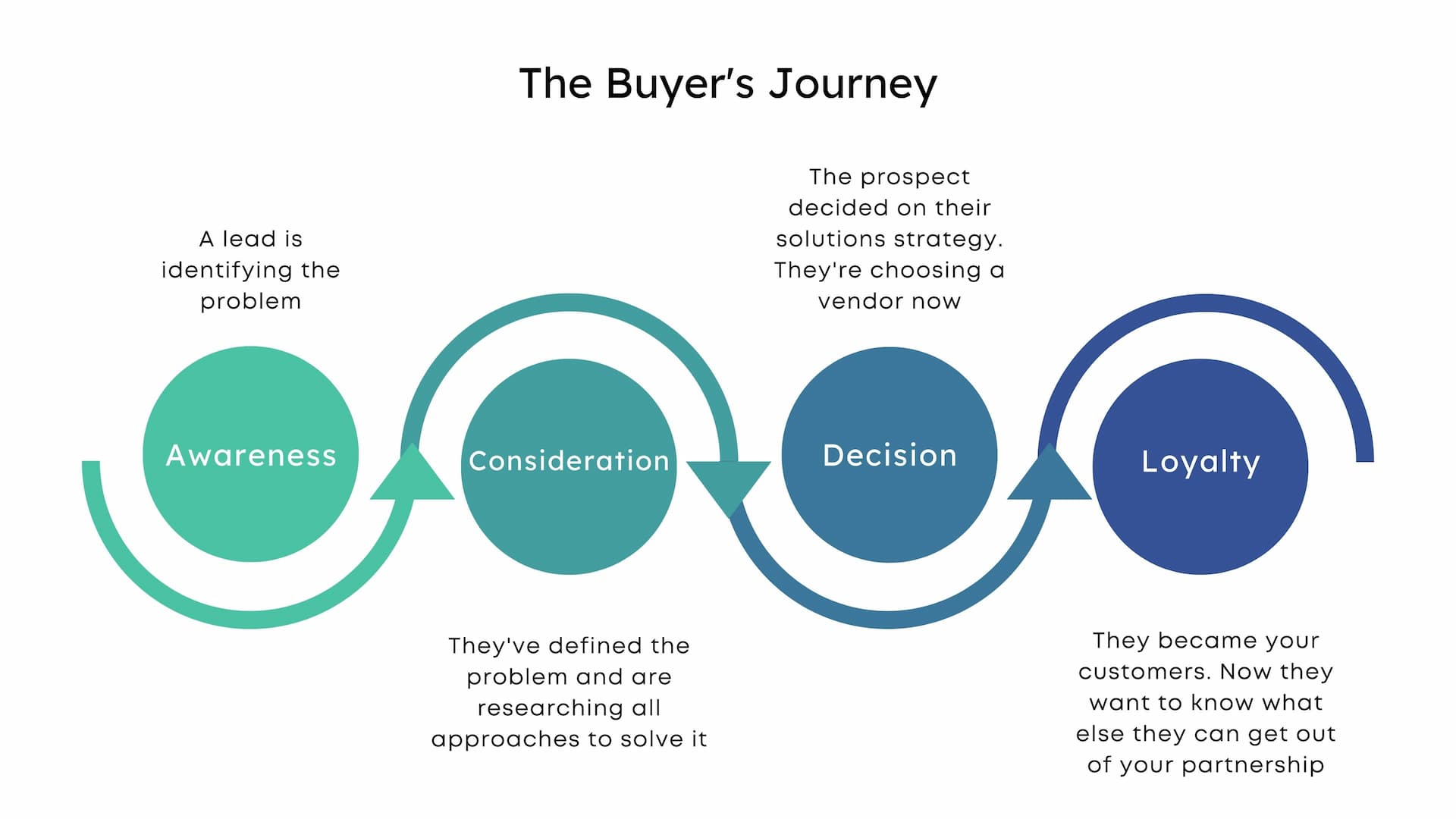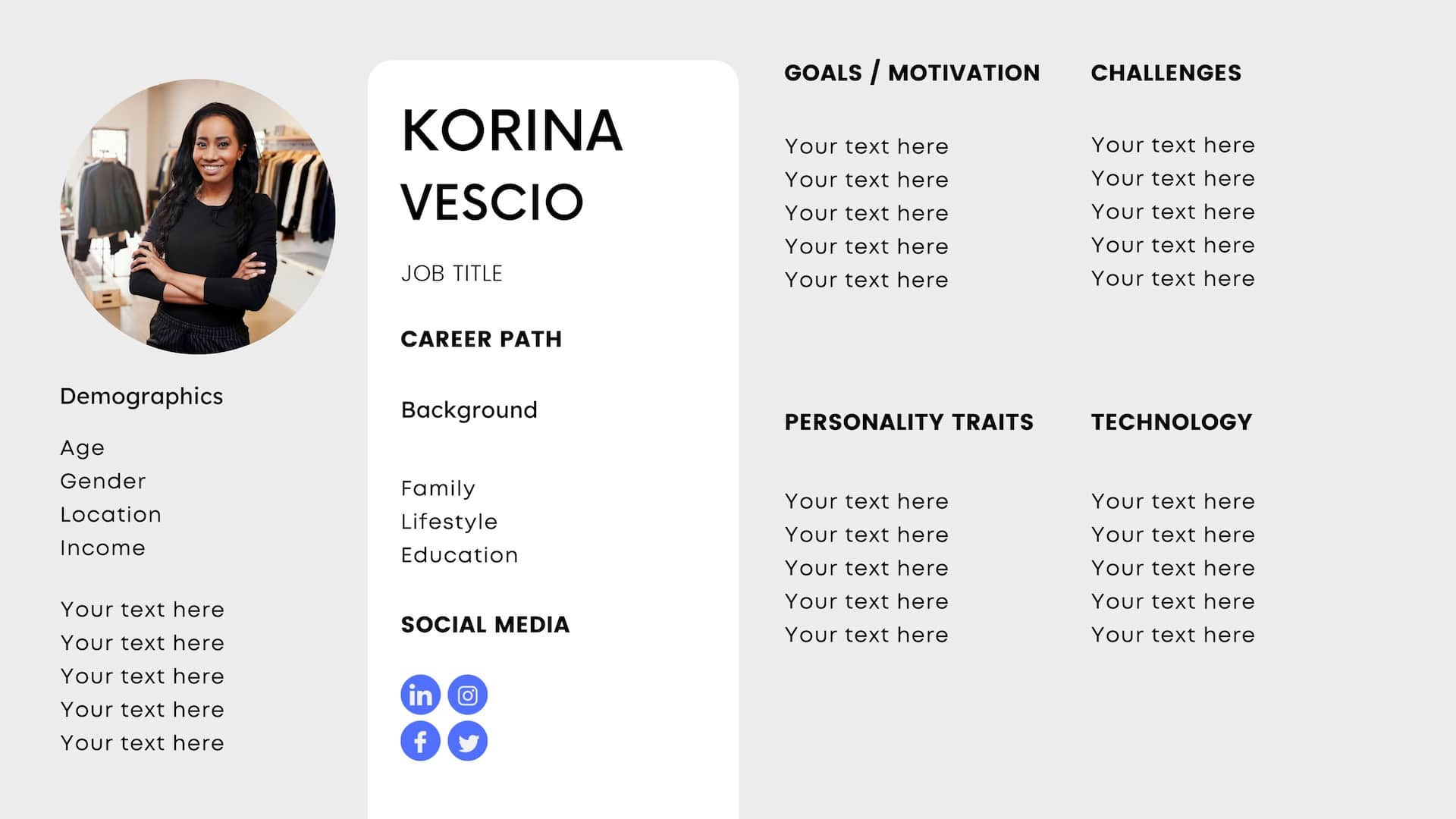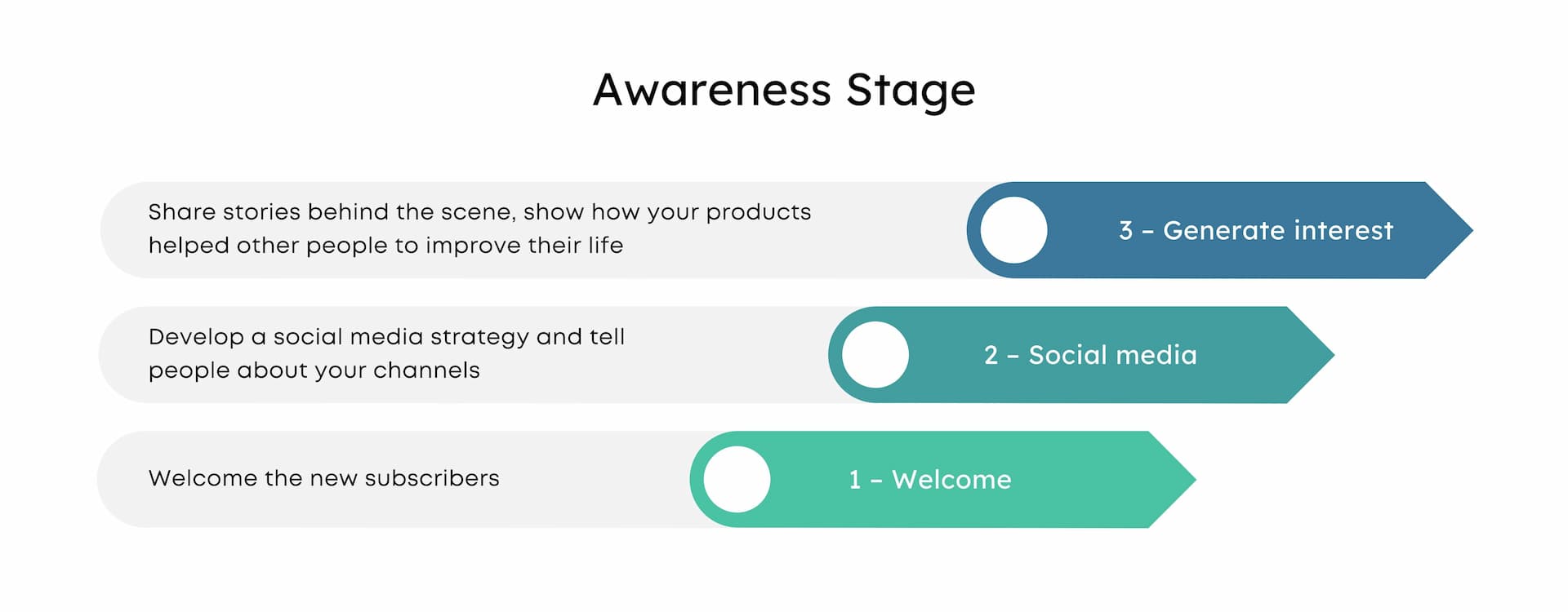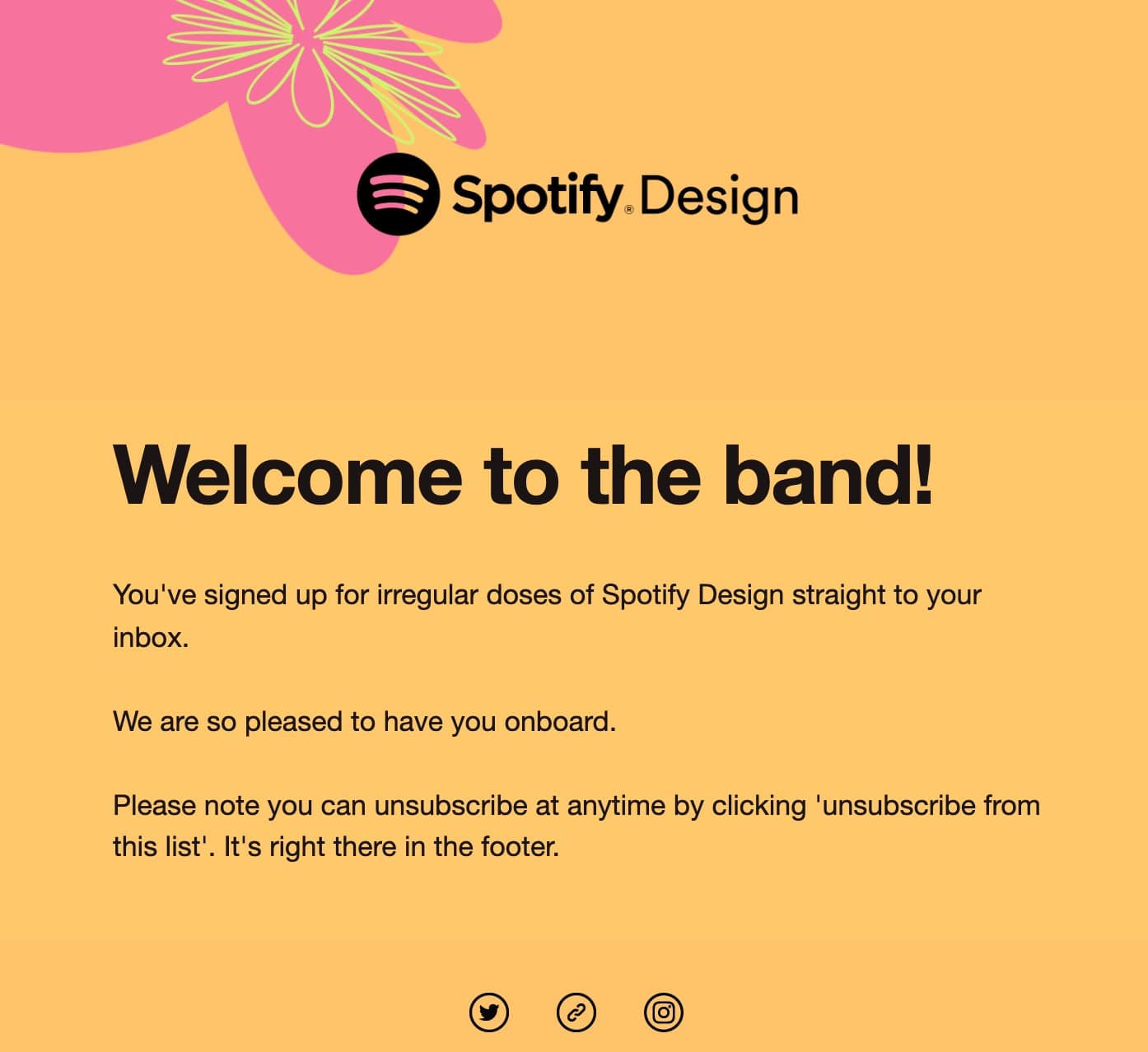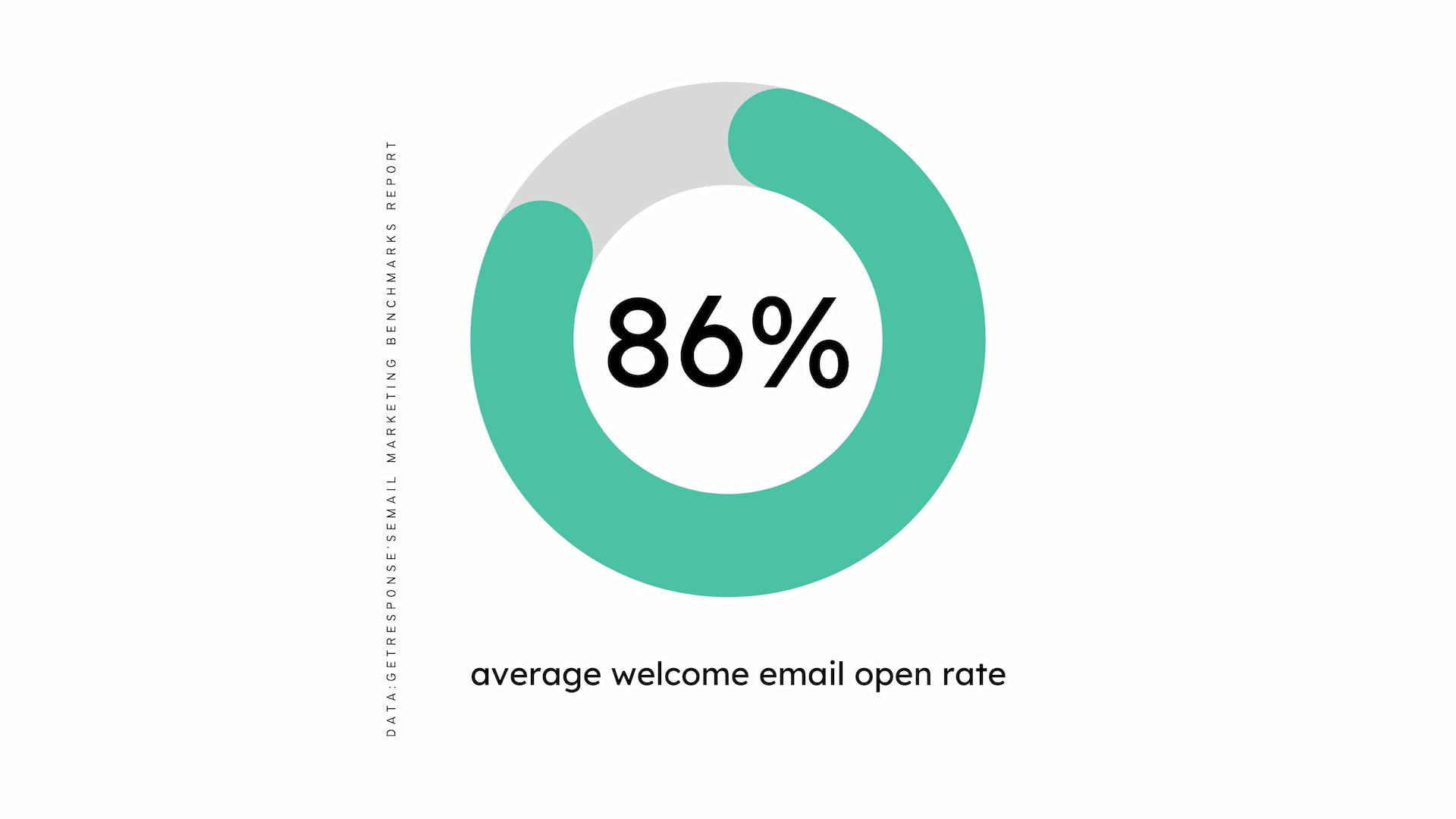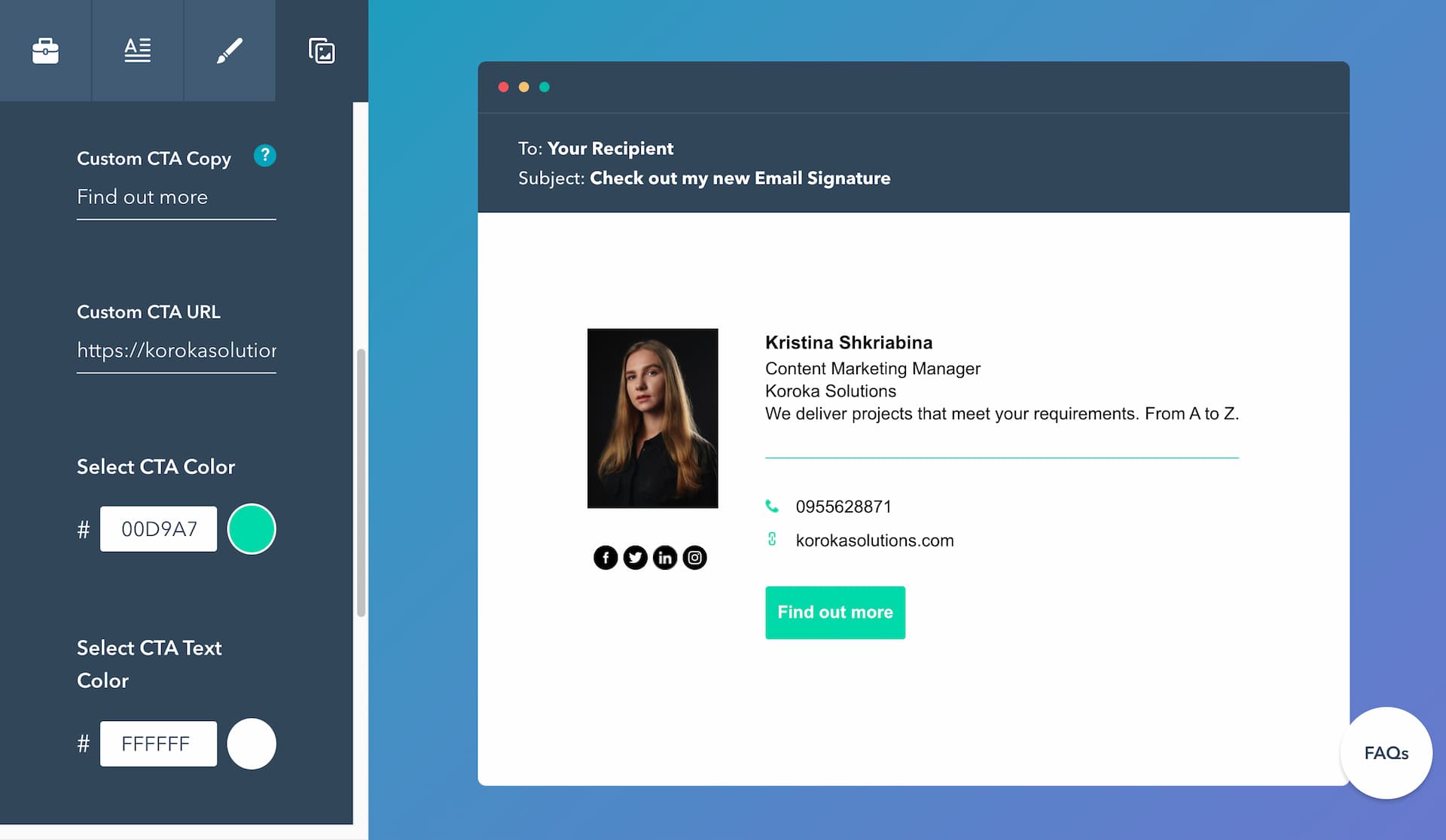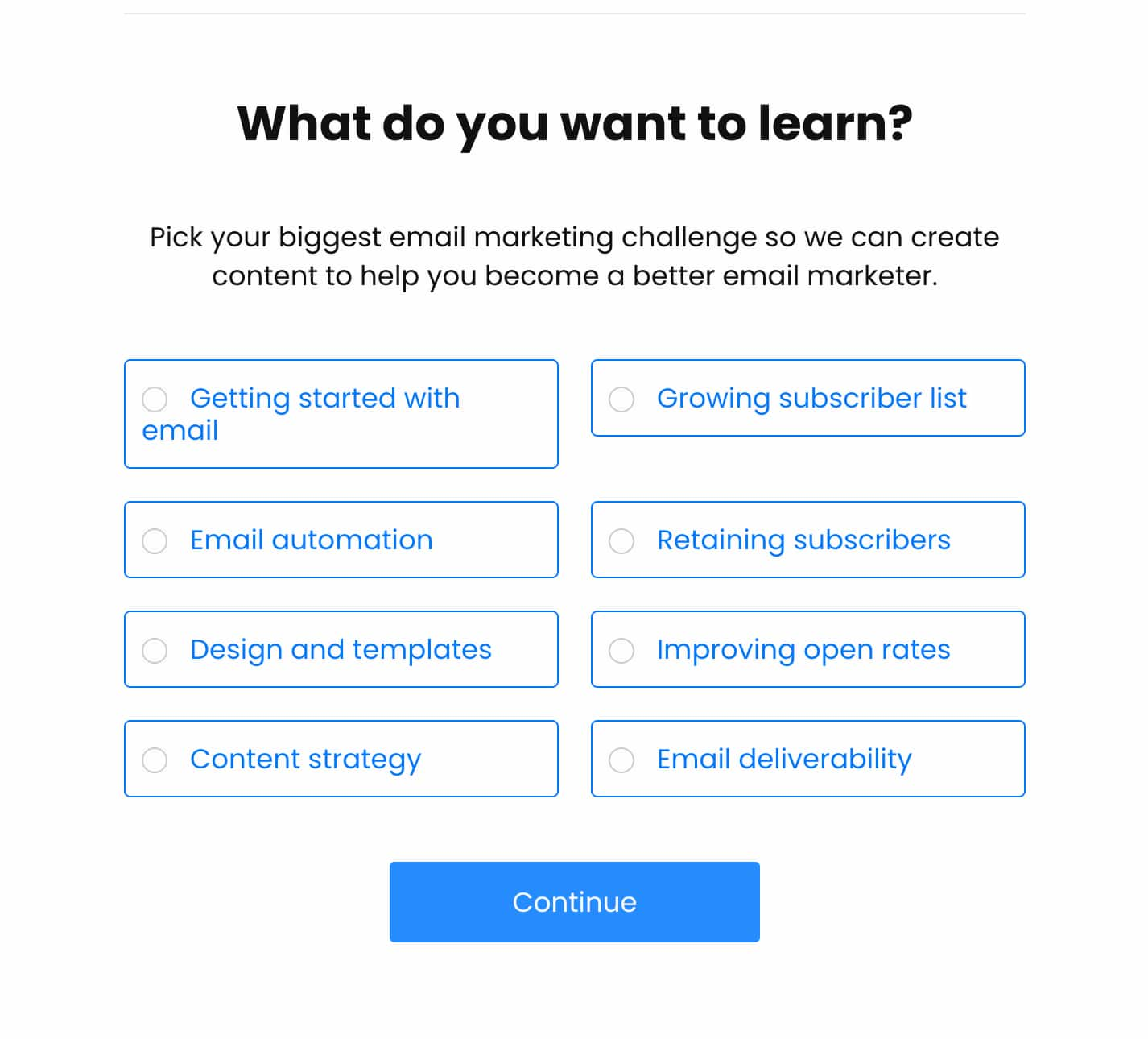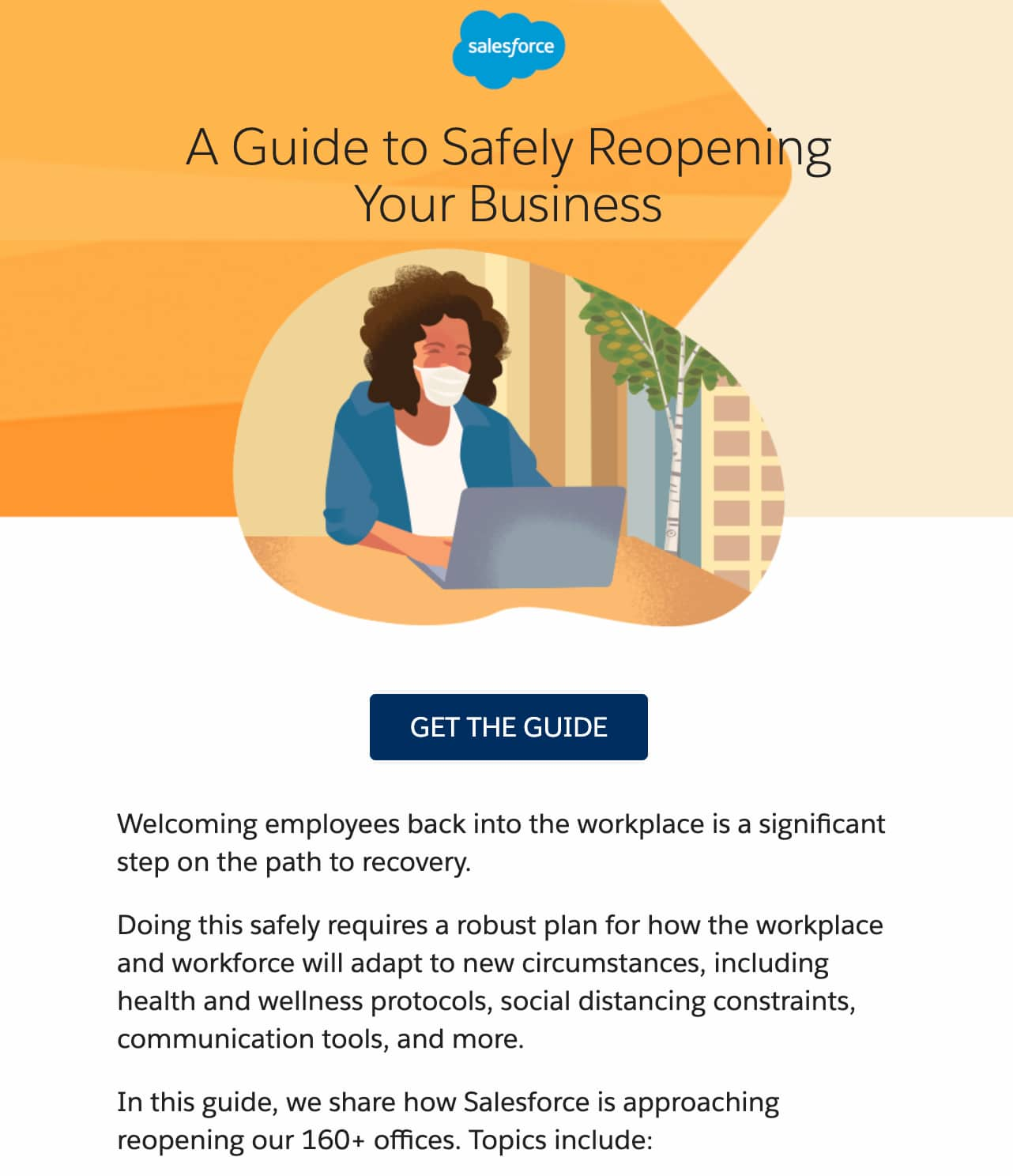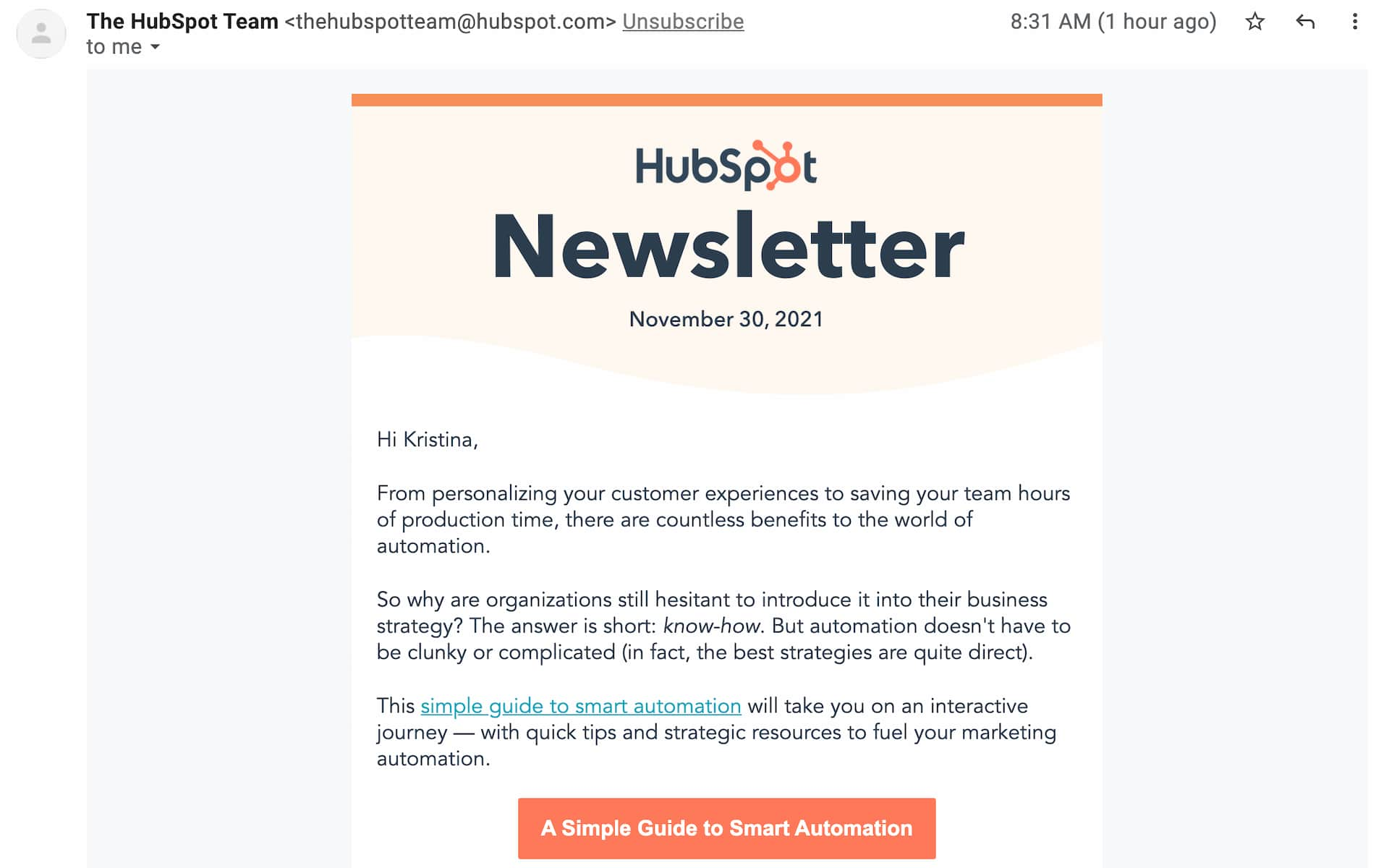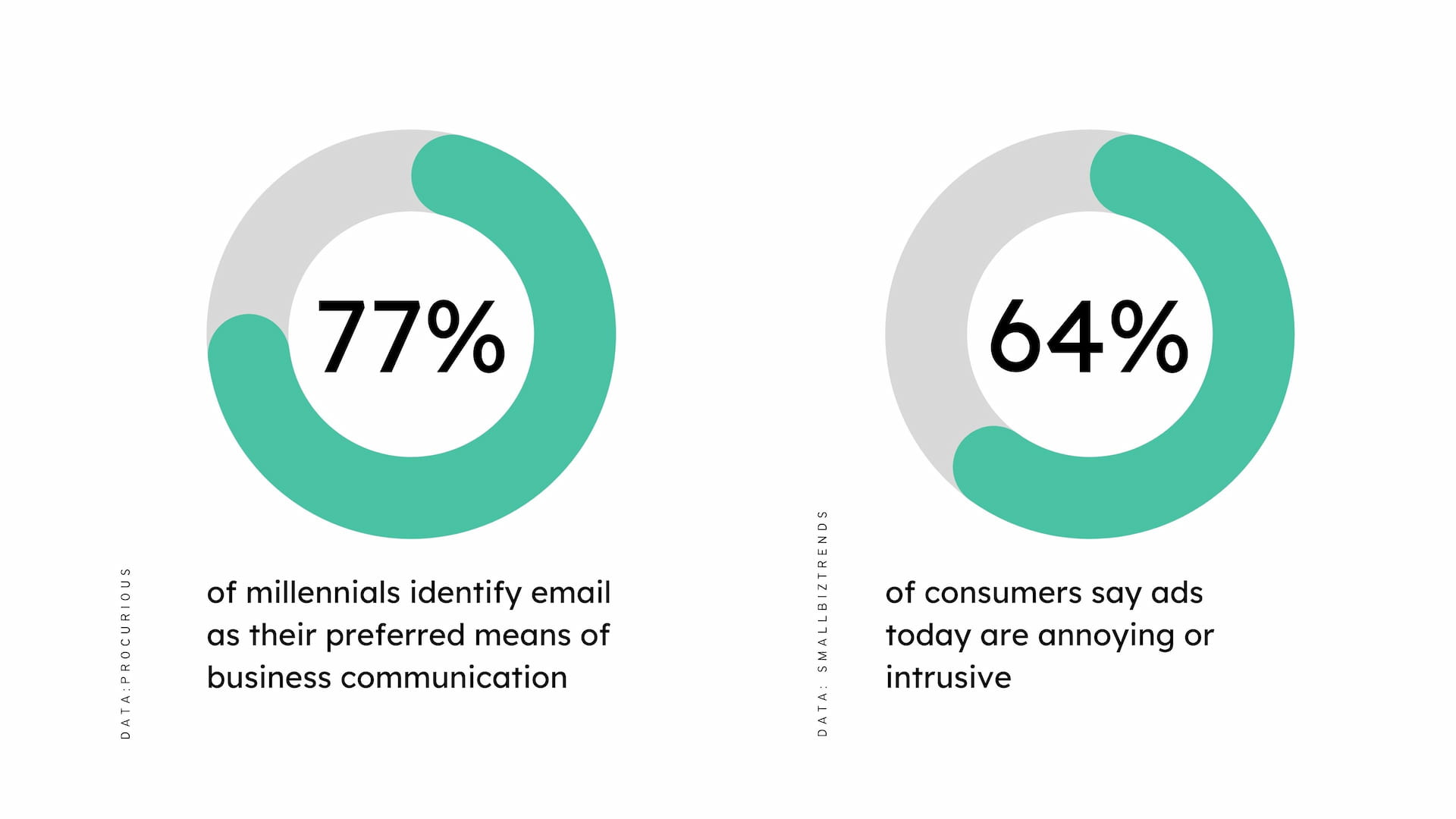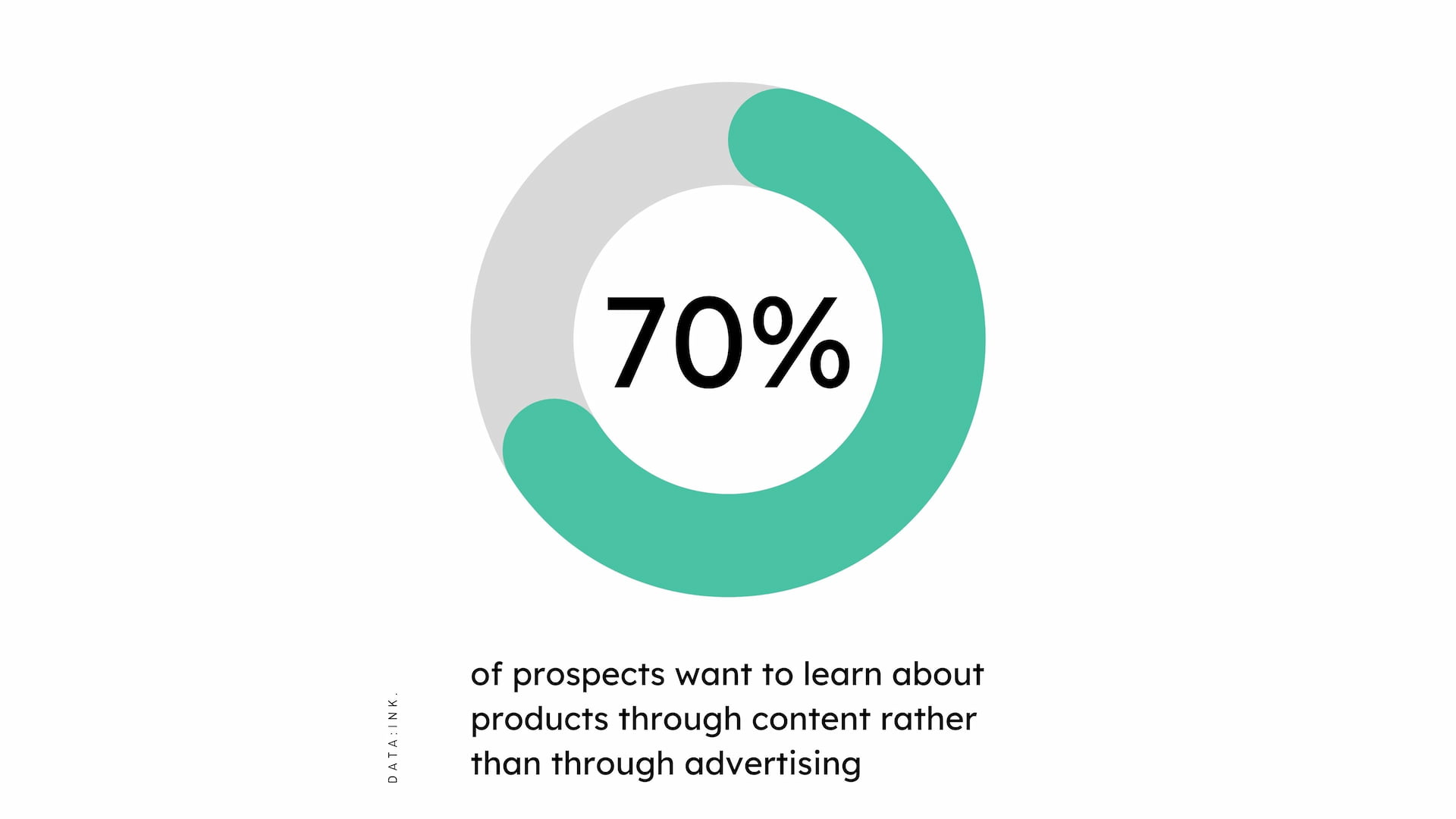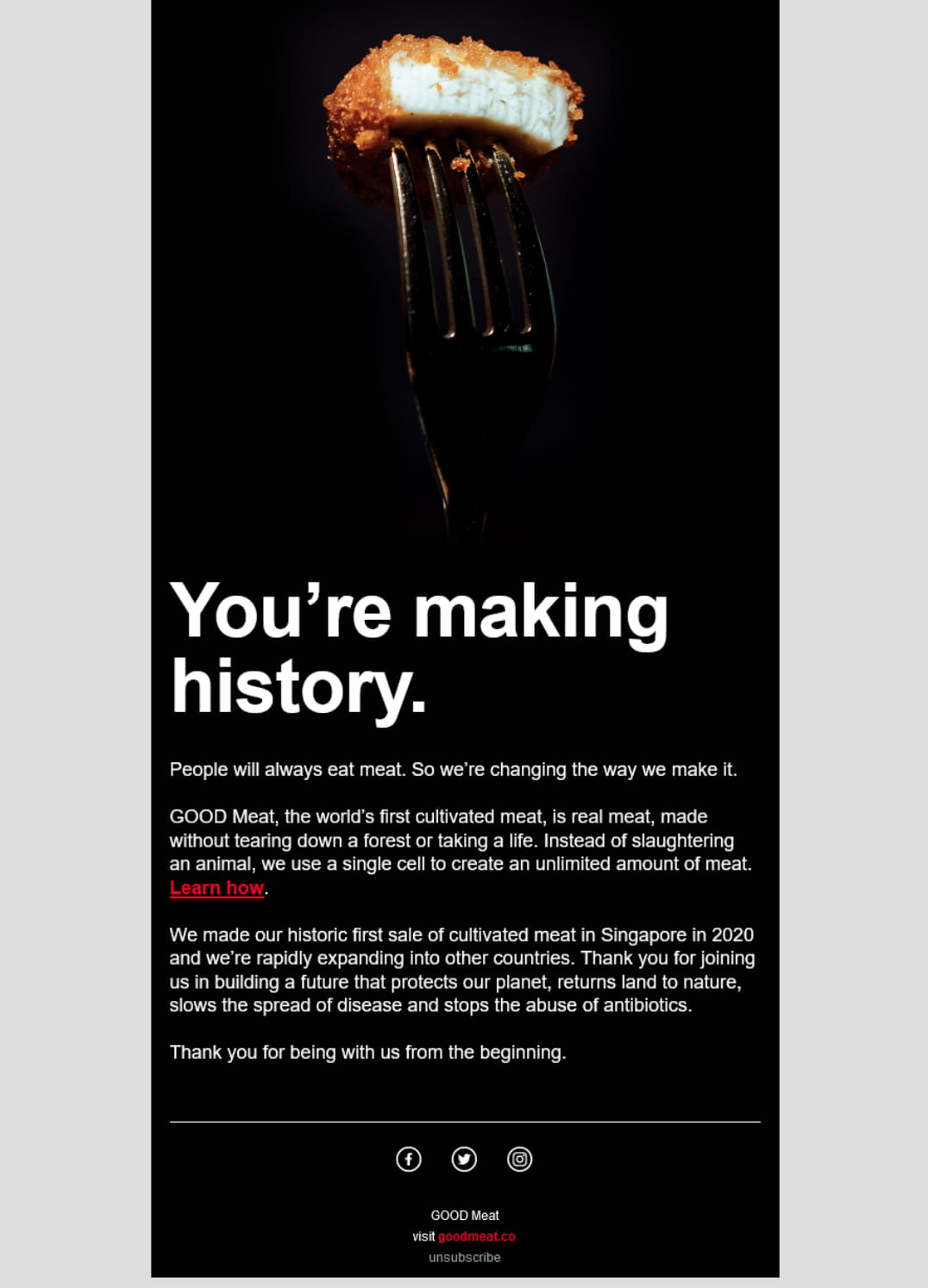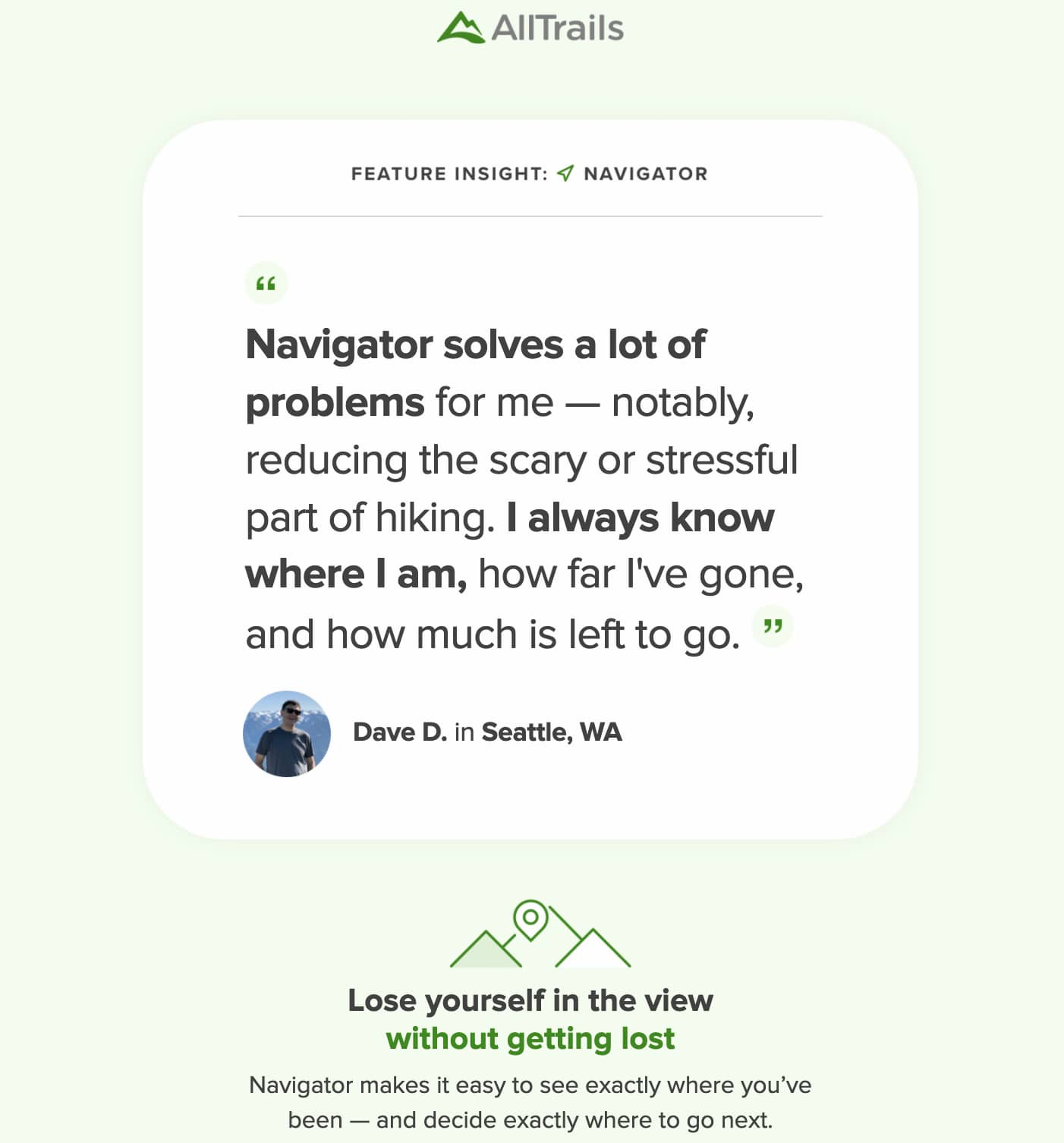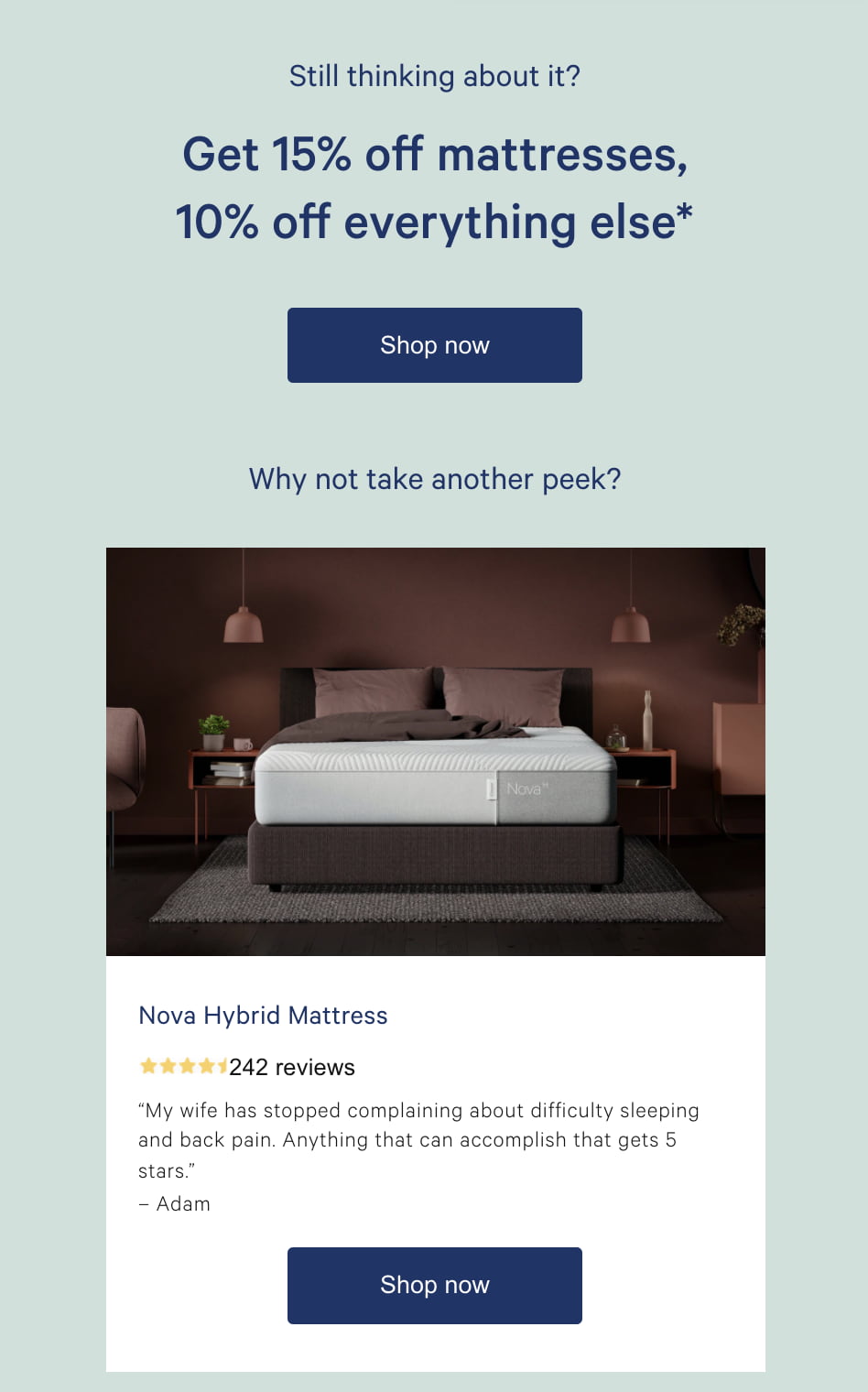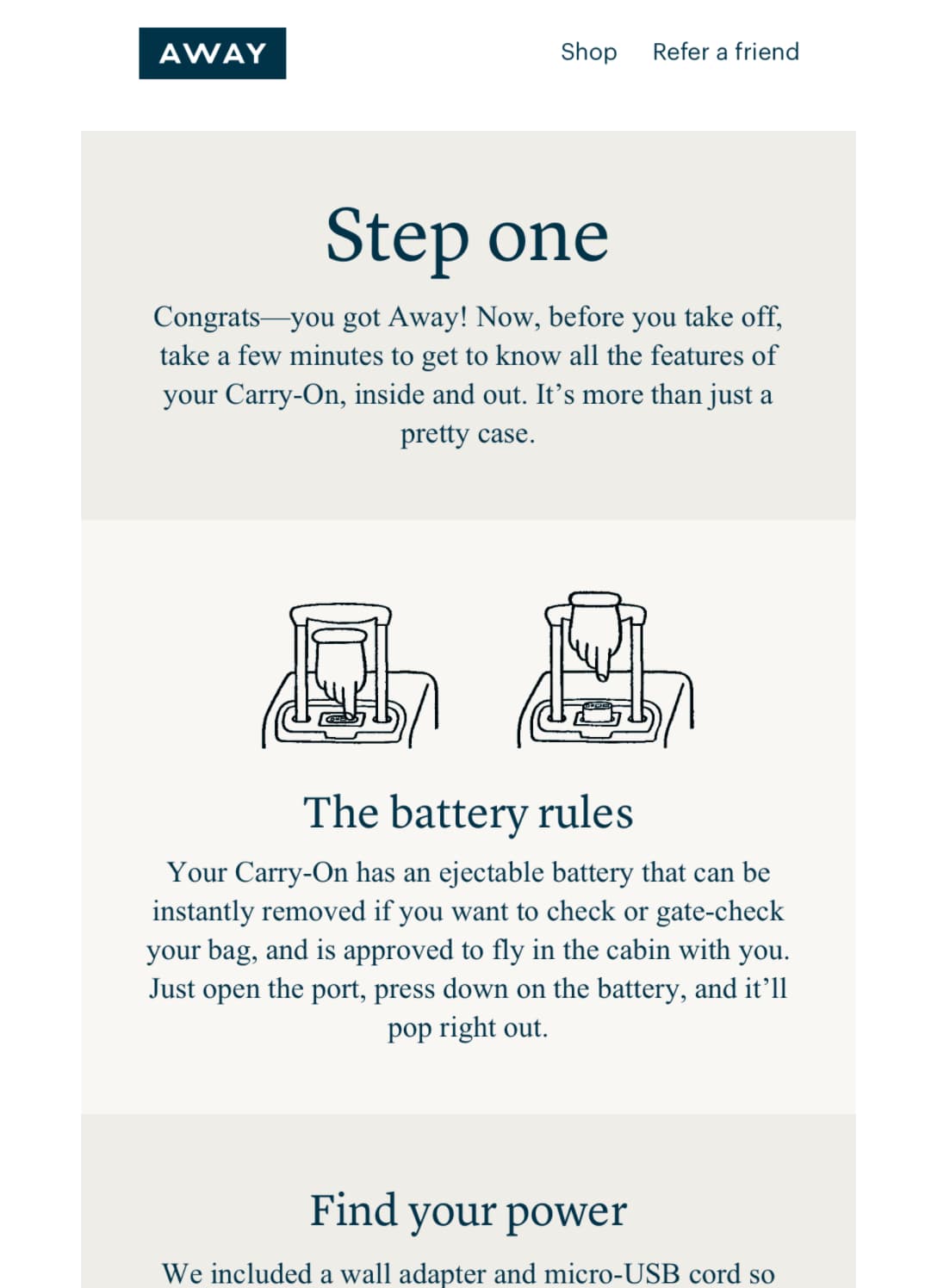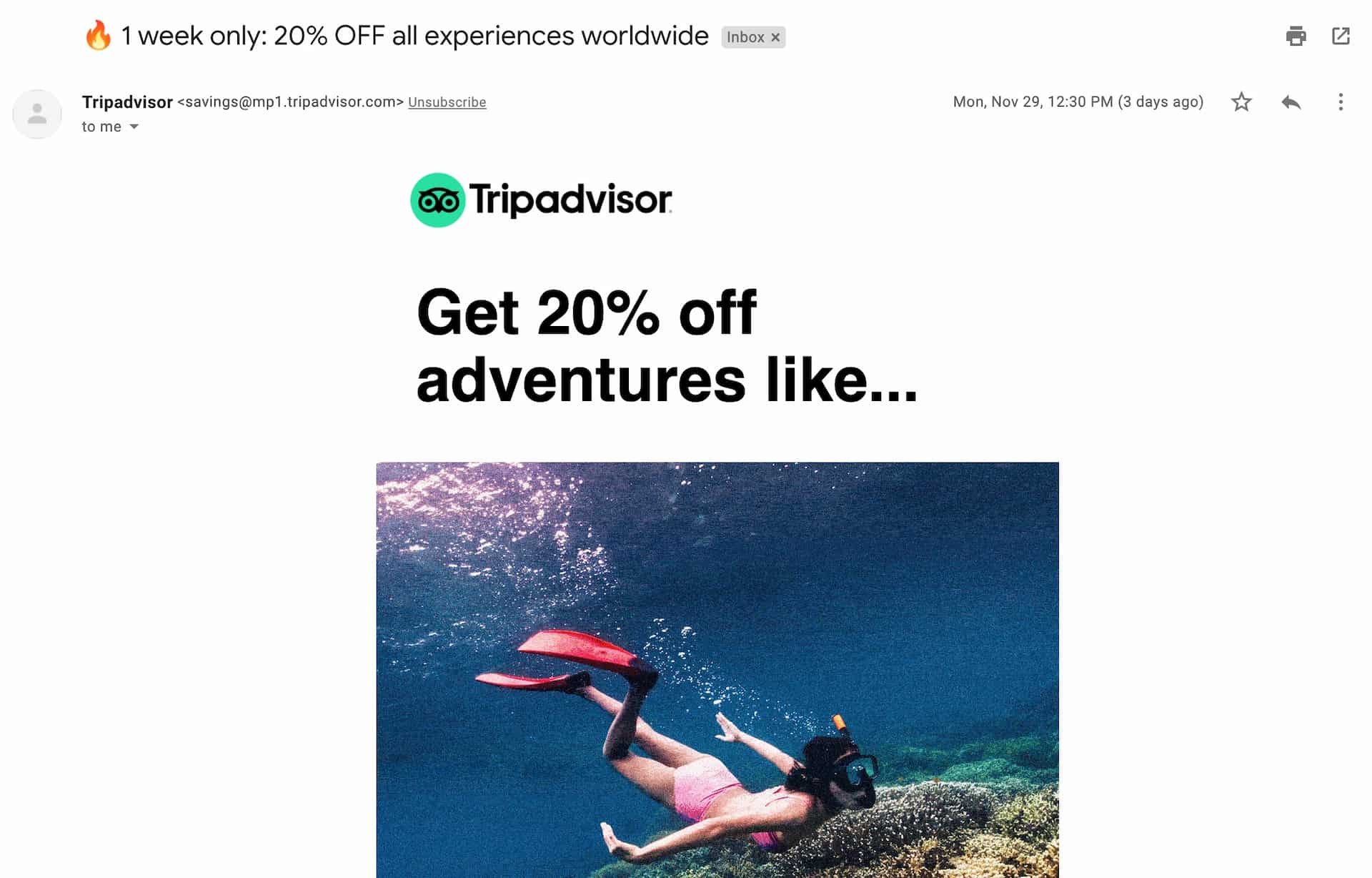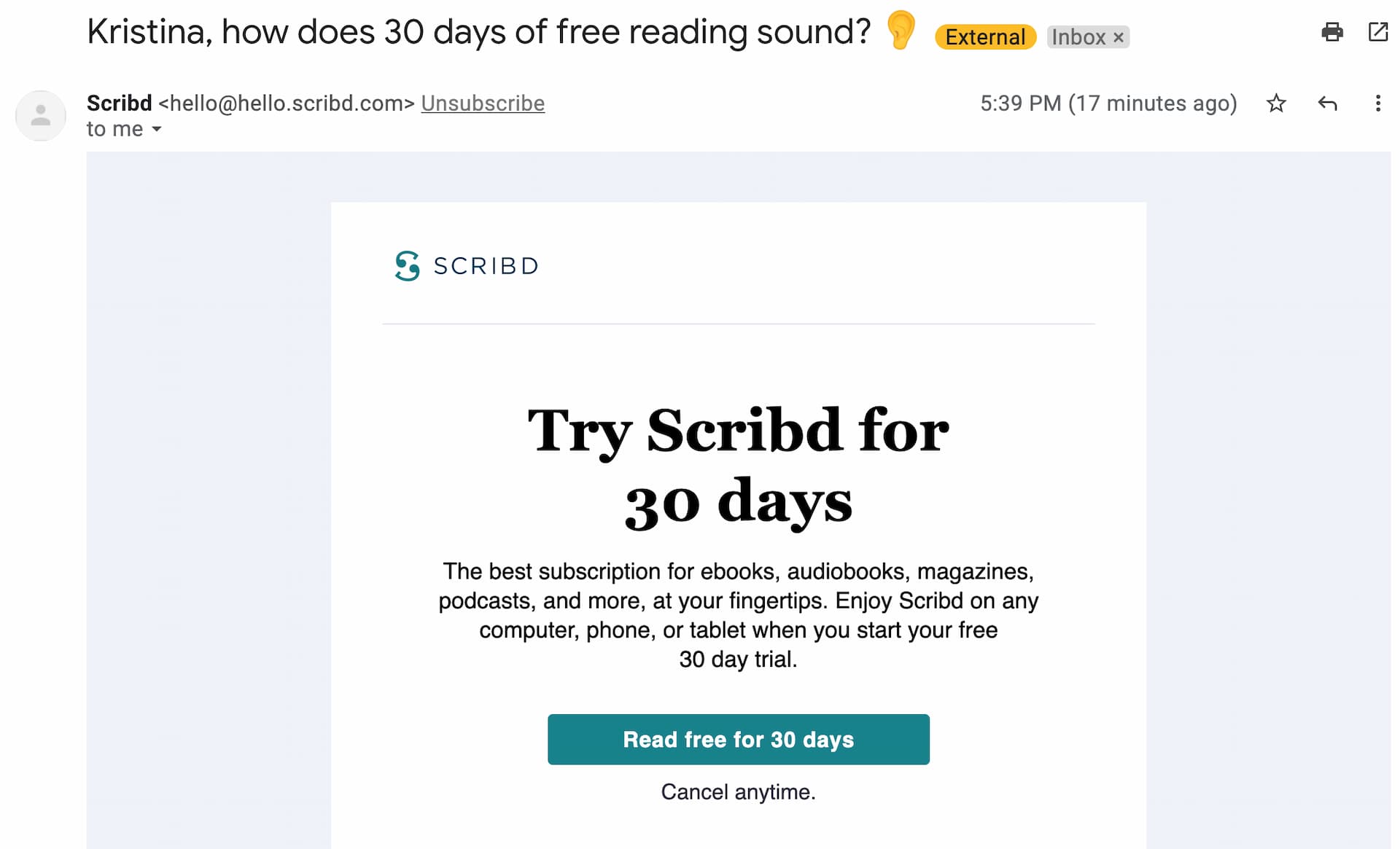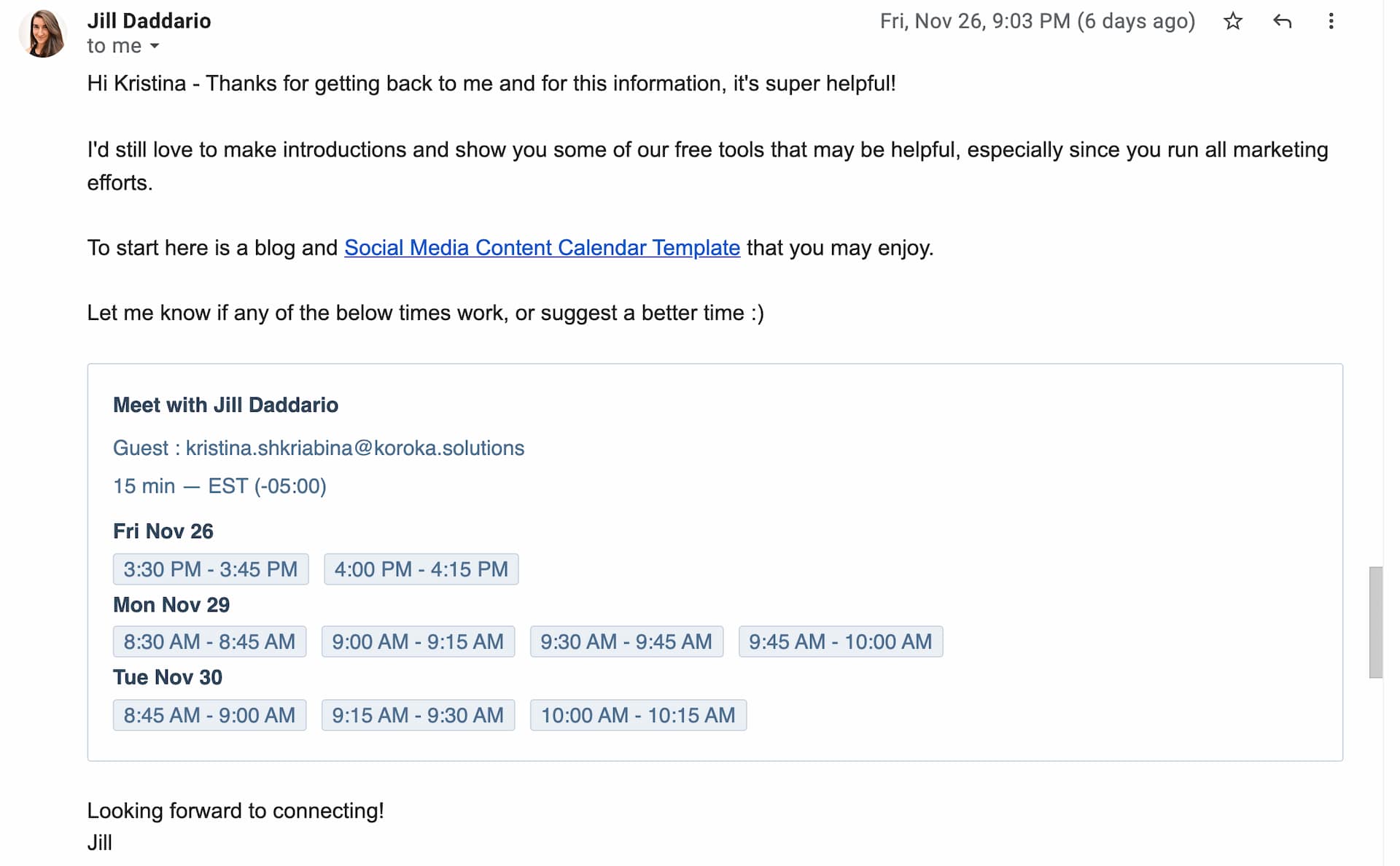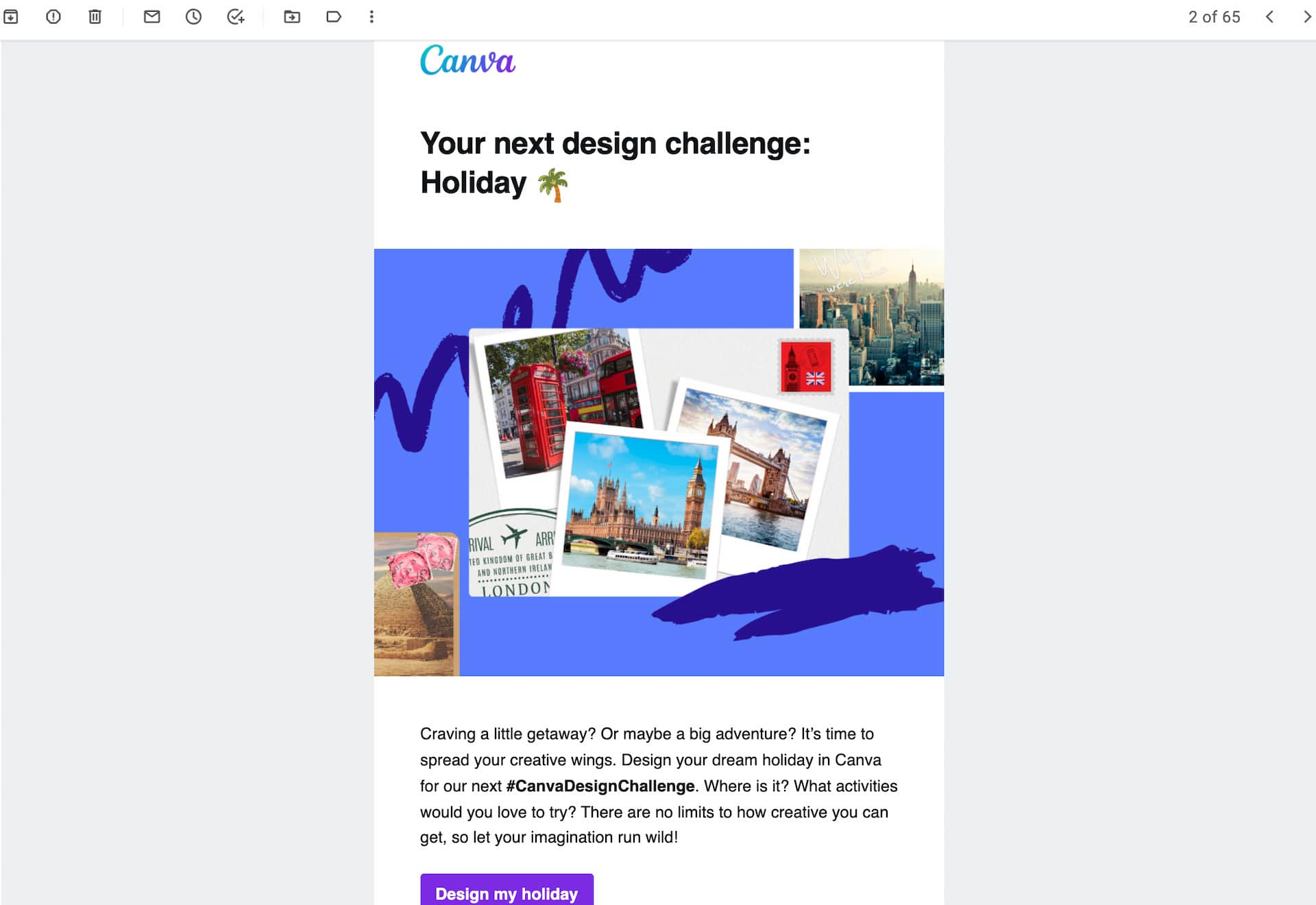Have you ever asked why your emails have low click-through rates? They look perfect, highlight your product’s benefits, and include a strong call to action. What’s gone wrong?
The most common reason is not mapping your email strategy to the buyer’s journey. You send your audience the wrong message at the wrong time, so they’re not ready to buy.
And you’re not alone. 51% of marketers worldwide say that developing targeted content by buyer stage is their top challenge, shows Demand Gen Report.
So, in this article, we’re going to show how you can match your content to the buyer’s journey stages and how to nurture your leads while doing so.
Table of Contents
What’s the buyer’s journey?
People wake up in the morning and decide to buy a specific product only in movies like Free Guy. And even then, they’re completing a part of a bigger story.
In real life, the customer’s motivation is far more complicated. They need to identify a problem they face, find an appropriate solution, and the company that has the best offer.
Going through these processes before committing to a purchase is called the buyer’s journey. It includes four stages: Awareness, Consideration, Decision, and Loyalty.
Awareness
The first stage of the buyer’s journey focuses on awareness. At this point, your contact (lead) realizes that they have a problem and researches to understand, frame, and name the issue.
Now’s the time to help people by offering them educational content related to their research. It might be ‘How to’ articles, guidelines, or ebooks.
Also, you receive an opportunity to introduce your brand. Often, a person at the awareness stage may not have even heard of your product or service. So, you can share your values or tell your brand’s story to keep people interested in your company.
However, avoid aggressive promotion of your company and services. Contacts aren’t ready to buy from you and can be annoyed by the excessive advertising.
Consideration
The person going through the buyer’s journey has a clear understanding of what the problem is, its impact, and other related technical information. During the consideration stage, they research possible solutions to the problem.
Because you’ve already captured their attention, they might visit your product pages, area of expertise content, and the ‘About us’ section.
The primary rule here is to engage with people who have high chances to become clients (we call them prospects) and show them why your offer is a good fit.
Decision
Prospects are ready to buy, but that doesn’t mean they will choose your brand. They will often compare all providers and craft a list to narrow down their options.
Companies now offer free shipping, free trials, and case studies to beat the competition. They respond quickly and personalize their message to fulfill all prospect’s intentions.
Loyalty
You have already closed the deal. The traditional sales funnel ends here. But these days, it’s not over yet.
The person will first decide how they feel about what they just bought. And they want to feel great about having accepted your offer. So, your main goal here is to turn your customers into a loyal following.
By helping your customers gain the most value from your brand, you encourage them to buy again and again. As a result, you can increase customer retention and boost your company’s profits.
What’s a buyer persona?
Understanding your Buyer Persona is crucial to crafting effective emails for each stage of the buyer’s journey. A Buyer Persona is a semi-fictional representation of your ideal customer, based on market research and real data about your existing customers.
It includes customer demographics, behavior patterns, motivations, and goals. By understanding your Buyer Persona, you can tailor your emails to address their specific needs and pain points, making your emails more relevant and engaging
A buyer persona is a research-based description of someone who represents your target market. It’s also known as a customer profile or a marketing persona.
This model explains who your ideal customers are, what their days are like, the challenges they face, and how they make decisions. As a result, you can focus on qualified prospects and tailor your content to meet their specific needs.
What’s more, you can embed a convenient online platform for booking appointments. What will this bring you? Well for one thing, you’ll maximize your exposure to leads. Somewhat secondly, you’ll ease the process of converting qualified leads into high-value buyers.
It’s a really groovy way to provide a frictionless and rewarding experience for both parties. That’s probably what you’re aiming for, right?
When it comes to B2B businesses, you may have multiple buyer personas. For example, if your contact is not a decision-maker and needs to gain the approval of others before making a purchase.
Each individual required for that decision is a separate persona. They’ll have various criteria for estimating your product, and you’ll need complex strategies to address those demands.
Why is the buyer persona important?
Buyer personas are a precious tool for the email team. They’ll help build every aspect of your strategy, including lead qualification, email design, blog posting, and newsletters.
Once your company’s personas are set, you can start splitting up subscribers into groups that closely match the portrayal of your ideal customers.
To do it correctly, try using a customer relationship management system. It holds all necessary data, scores your leads, and sends them automated emails. This method allows you to achieve even greater results.
Creating an Email Funnel
So far, so good. You have segmented your audience. The next step is creating an email funnel.
The email funnel is an automated series of emails that guides your leads from one stage of the buyer’s journey to the next.
During the Consideration phase of the buyer’s journey, the significance of email templates development becomes crucial. Prospective buyers are actively investigating different options, and incorporating a personalized touch can significantly impact their decision-making.
Through the implementation of a strategic methodology in creating distinct and captivating designs, you can establish a connection with the particular requirements and preferences of your target audience.
This developmental procedure not only improves the pertinence of your communication but also harmonizes your messaging with the buyer’s journey, guaranteeing that your outreach is timely and impactful, leaving a lasting impression.
While optimizing relevance and timing leaves positive imprints upon prospect memory, brand consistency across each touchpoint strengthens impression management by affirming credibility through familiarity.
Though initial impression management warrants priority alignment with early stage inquiries, earning leadership positions requires evolving messaging to guide buyers along the entire journey from awareness to advocacy.
Beyond ensuring alignment with immediate prospect priorities, impression management scaling through sustained omni-channel presence cements emotional connections, forging bonds that withstand fleeting competitive overtures.
It includes different email templates you will use to respond to a particular user’s action. Let’s learn more about writing an email for all stages of the buyer’s journey.
Stage 1: Awareness
Every sales funnel starts with the awareness phase. It’s the largest part of the journey because it holds a wide net of readers interested in how you’re going to help them.
They expect a solution from you, not an inbox full of annoying promotional emails. As you want to satisfy their needs, consider automating the welcome series in three steps.
- Greet the new subscribers. Introduce your brand to them. When people buy something, they want to support brands they trust.
- Notify the subscribers about your social media channels and ask them to follow you.
- Prove the value of your asset. Show your best-selling products and how they helped other people to solve their problems. Storytelling is a must for generating interest.
Welcome email
An introductory email starts the personal conversation with leads or blog subscribers. It can contain videos, special offers, or just a warm hello to start a relationship with a new connection.
A welcome email has an average open rate (OR) of 86%, according to the latest GetResponse data. And the average click-through rate (CTR) is around 25%. That’s four times higher than the average read rate for all other types of emails.
When you write a welcome email, ensure that it starts with a compelling subject line. The message should be clear and friendly. It would be great to present an email coming from a real person (such as a Marketing Chief Officer or Marketing specialist). It increases trust and loyalty.
The Example:
Subject line: You’re now a part of the (ADsAI) community!
Body:
Hi (Angela),
Welcome to (ADsAI). We believe that (using Artificial intelligence for hyper-personalized ads will fuel your pipeline in a few months).
We’re here to help you (run efficient ad campaigns and cut costs per customer acquisition) 24/7.
As a new subscriber, get our free guide on (How to use AI in advertising). If you have any questions, please write back.
Happy to connect and serve as a resource for you 🙂
Best,
(Kristina Shkriabina)
(Marketing specialist)
Pro Tip: We highly recommend you brand every message by creating a cohesive email signature for each agent on your team. It should include their photo, links to social media channels (personal + corporate), phone number, and website URL.
Customer pain points email
The second type of email connected to the Awareness stage focuses on the lead’s pain points.
Paint points are the problems your potential client faces and can be solved by your product or service.
To define those challenges, ask a person a simple question in an automated email: ‘What’s stopping you from (your text here)?’
The answer will show you what educational content you should create to capture the lead’s attention.
Another suitable method is embedding a survey in the email.
Once you receive all the necessary information, you can send educational content.
Education emails
Let’s say you have a Zero Waste Store. You know how chemicals can damage health and nature, but many people don’t. They need constant learning.
So, send them an email with a study that shows the outcomes of using mass-market products. And then explain how your company conserves the environment and keeps the community healthy.
The content formats to choose from include email courses, ‘How to’ blog articles, guides, ebooks, templates, white papers, and workbooks.
Furthermore, implementing strategies to attract new clients can enhance the effectiveness of your content marketing, helping to expand your audience and increase engagement.
If you want subscribers to learn new things regularly, create newsletters.
Feel free to choose the format closer to your audience, which covers the topic better.
Thus, producing consistent value through email plays is crucial for lead nurturing. Identifying which subjects your buyers are most interested in and delivering educational materials on those topics can be a way to position your company as a thought leader within your industry.
Increasing brand awareness via email
Brand awareness is a representation of how close your target audience is to your brand and how much they know about you. Companies with high brand awareness are called ‘trending.’ Raising brand awareness is valuable in the early stages of the buyer’s journey.
And email marketing is an incredible tool for that. It provides a personal approach. It’s cost-effective and easy to monitor the results.
So, if you want to run a successful email brand awareness campaign, start with optimizing your subject line. Include your company name or product, clarifying who the email is from and what it’s about.
The language in your subject line and any emojis should also align with your overall brand tone of voice.
Do not forget to place your logo in a prominent place. Incorporate your brand colors and fonts in the email.
As far as design is concerned, that’s it. But telling a cohesive brand’s story is the more complicated task. Every message you send is a part of that story. And it starts from the introduction.
A good introduction defines you as more than a company that sells something. How else would you describe yourself to make others listen? Can people resonate with your statement?
Those are essential questions to ask while raising brand awareness. They will help you to tell a narrative and make an impact.
The Example:
Hi (name),
I’m reaching out from (company name) as I’ve regularly talked to other managers, and I believe our (product/service) can help you increase your results.
(Company) has been in the industry for over (years). We’ve been working with clients such as (big names) and helping them:
- (address a pain point)
- (address a pain point)
As a (your position), I’ve worked on projects related to (hot topic). So, I can share a few insights with you that our team collected over the years. Let me know if you’re interested.
You can check our portfolio (URL) at any time.
Best,
(Signature)
Avoid continuous sales pitches if you want to focus more on your product or service in the introduction. Ads overload causes damage to a brand’s image.
To generate interest in your product correctly, send an email explaining its benefits and how it solves a problem. Do not overdo it with CTA’s. It would be too aggressive at this point.
Stage 2: Consideration
Now when the most interested users know your story and the least interested readers have unsubscribed from you, you should think about how to convince people that your services are worth the money.
Lead segmentation can help identify those who’ve made their way to the consideration stage. They’re interested in your offer, but they still aren’t ready to buy.
That is why you need to continue persuading them that your product is valuable. You can do this using promotional emails (such as customer testimonials and recorded webinars or product tutorials).
Reviews
When people aren’t sure about a purchase, they might be interested in 3rd party opinions to strengthen their choice. It could be analyst reviews or customer testimonials.
Product analyst reviews evaluate assets to understand how they work and see if they will meet the business’ needs. They also include product ratings.
Customer testimonials are impartial evaluations or recommendations written by present customers to inform prospects about the usefulness of the product or service.
They take away some of the doubts a prospect might have about making a purchase and, thereby, make it easier for them to come to a decision.
By including reviews in your marketing emails, you constantly remind readers how fantastic your products are.
Pro Tip: Use testimonials while offering a discount or reminding about stuff left in an abandoned cart. This can reduce hesitation in the prospect’s mind and persuade them to make the purchase.
This tactic can also be used to re-engage old leads prompting them to take action.
Webinars or product tutorials
A product tutorial catches your public’s attention by demonstrating how to use your company’s assets. But featuring the product, you should think about what your prospects want to know and how you can educate them.
Tutorials are frequently sent via email with a link to the video or written and visual instructions.
Pro Tip: To increase your results, we advise you to prioritize a video format for tutorials or combine video and text.
The 2021 Wyzowl study revealed that 69% of users prefer to learn about a product by watching a video. And only 18% would instead read an article or a blog post.
By producing video resources for consumers, you can enhance traffic to your website and potentially attract new clients while re-engaging existing ones.
Stage 3: Decision Stage
The decision stage is your last chance to persuade the prospects that your company is a better fit than your competitors’ and your solution is worth buying.
You might ask, ‘I’ve already generated the interest of my audience, so what else do I have to do?’ Fair enough. But the thing is that people can always change their minds.
So, you need to make sure that you deliver impactful information and entice people to purchase.
You can do it by offering:
- a demo/trial/discount with timely call-to-actions
- a free consultation
Discounts, trials, and demos
Mastering the art of writing promotional emails sometimes takes years. Because individuals are different, the content you send should be personalized.
Do you remember what emails you’ve received stood out? How were they different from the others?
In each case, the answer will be different. However, there is a common rule for any message. It shouldn’t look like aggressive advertising and spam.
Pro Tip: If you want people to buy faster, try limiting your offer by time. By inducing an urgency factor and triggering fear-of-missing-out (FOMO), limited-time offers push people to decide about a purchase quickly. Nobody wants to miss the boat.
The first interaction with your product is a make-or-break part of SaaS sales. Many SaaS companies use a free trial or a demo to improve sales.
In the intricate landscape of software-as-a-service (SaaS) sales, the initial product interaction emerges as a pivotal juncture. Much like the interplay of perplexity and burstiness in creating compelling narratives, SaaS companies strategically employ free trials or demos to craft a captivating first impression.
The delicate fusion of user experience and tailored presentations mirrors the art of skillful writing, ultimately contributing to improved sales figures. This first encounter serves as a microcosm of the broader SaaS sales journey, reflecting the meticulous balance between complexity and variation that is essential in driving successful conversions.
And they are effective at the decision stage because once you can get a person to try your product or service, it’s easier to convert them after this.
One of the best ways to convert leads after trying out a free trial or demo is to follow up with them immediately.
Your CRM can automatically send the message to everybody whose offer has expired.
Professional consultation
Another method of persuasion is a session with a specialist who can answer all lead’s questions and highlight the product’s benefits.
Since you are stressing that an expert consultation is on the table, it’s a good idea to present the speaker’s achievements properly.
Besides the general information, specify what well-known companies they have worked with and how they helped them. Always think about what will sound authoritative for each particular client.
To show that the meeting won’t take long, write, for example, that you only need 15 minutes and attach possible booking appointments.
Stage 4: Loyalty
The traditional funnel ends at the conversion of a lead. But these days, it’s not over yet. You have already sold your asset, but your relationship with the customer has just started. Now it’s time to nurture them with personalized content to maintain their loyalty.
Below are six content ideas on how to keep customers’ spirit positive about your brand:
- Survey them about the quality of the product or service
- Announce loyalty programs (rewards for their support)
- Propose tutorials and webinars
- Educate clients with the most relevant blog posts
- Offer codes for another purchase
- Propose customers to participate in challenges
A loyalty program can not only increase customer engagement but also attract new leads. When your customers become fans, they advocate for you, referring their friends, family, and colleagues to your business.
The Bond report has emphasized that over 70% of buyers are more likely to recommend a brand if it has a loyalty program.
Wrapping Up
Not all your contacts will convert into customers after finishing the email series. Moreover, not all of the converted customers will end up loyal. Some of them will disengage and lose interest in your brand.
But the email funnel we showed you increase the results and creates a group of faithful advocates at the end of the process.
Think of it as an opportunity. Let us know how you align emails with the buyer’s journey in the comments and don’t forget to share.
